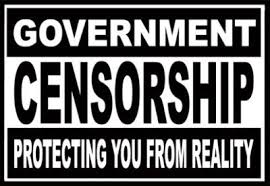To my surprise, my classmates generally had many different views and opinions on satirical news reports and their reliability. Personally, I know that these news reports are not to be taken seriously, but I still believe that they are very useful in our public sphere.
Jordyn made a great statement about drawing in a different group of viewers to satire stations. “Satirical reporting uses humor and sarcasm to draw in viewers, viewers who may or may not also follow traditional news reporting.” http://j92lo.wordpress.com I agree completely with Jordyn here because I personally find myself much more willing to watch The Daily Show rather than CNN news. This is an important statement because it allows for an entire population of viewers be up-to-date with current global news even if they do not follow traditional news reports. This is a great implication that our public sphere has a need for this type of culture jamming, as it allows for more of the public to be knowledgeable of the world around them.
That being said, the argument of whether or not the information provided through satire programs is useful or not is still apparent. “I wouldn’t consider them more resourceful or informative than a serious news source. I would however, consider these satirical news programs more honest, in that they’re not afraid to say what the real news is.” http://t7ums.wordpress.com Taylor and I share the same opinion when it comes to the truthiness of satirical news programs in that they still serve a purpose in informing the public on global news. The information may be bent or twisted to be comedic and attract viewers, but the basics of what is happening in the world are still present. In fact, the news reports are more likely to be the raw truth, as these reporters often have no boundaries in what is being said. The sarcasm used in shows like The Daily Show can easily be taken the wrong way, and for many people, it can give the impression that satirical news is less reliable than traditional news reports.
In Keith’s blog, he had a different opinion on the viability on the public sphere and satirical programming. “I don’t think these shows help our public sphere in any way, and should not be so involved within political issues.” http://keithsnell.wordpress.com I have to disagree with Keith here because as I said before, I believe that satire shows still have a unique and useful purpose. Keith does raise a good point in these shows bashing political leaders. He states that the jokes satire shows make towards politics can make a big influence on our youth, and how they view our leaders. I agree with Keith here because I feel as though the only information I personally hear about political leaders often comes with a joke attached, and that is not necessarily a good thing. Keith’s general point of view on this topic is that satirical programs are significantly less reliable than traditional news reports.
Overall, I’d like to think that my classmates and I are on the same page in thinking that satirical news reportage is slightly less reliable than traditional news reportage. This is true in many of the blogs that I read. For the most part the class thought that satire shows have a positive and refreshing impact on the public sphere, and some people disagree with good reasoning.










